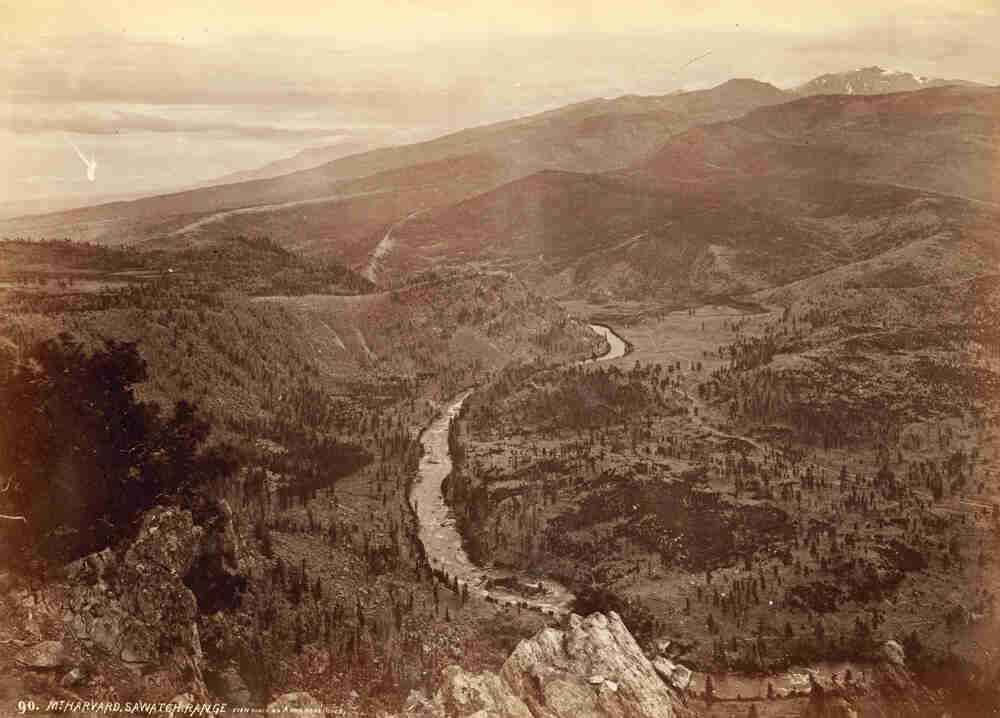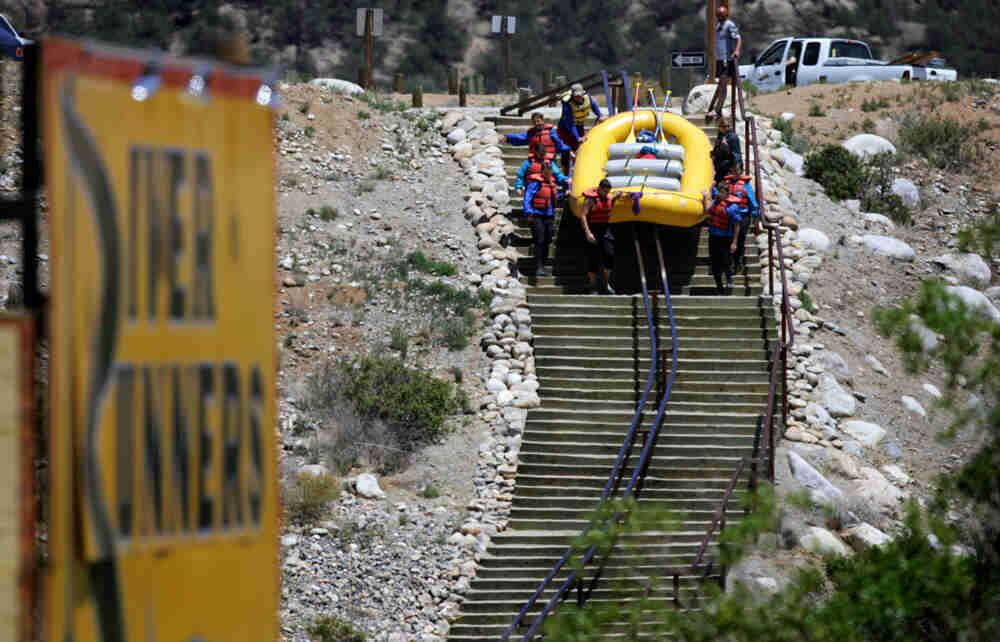Browns Canyon National Monument
Full Article
On February 19, 2015, President Obama designated 21,586 acres of scenic canyons, rivers, and backcountry forest in Chaffee County, Colorado, as the Browns Canyon National Monument. Browns Canyon is the eighth national monument designation within the state of Colorado. It provides visitors with varied recreational opportunities, from hiking to kayaking and white-water rafting and fishing, and has ensured the continued preservation of habitat important to ecologically sensitive species such as the bighorn sheep and pine marten.
A Wild Landscape
Stretching between the communities of Buena Vista and Salida in Chaffee County, the Browns Canyon area’s elevation ranges from 7,300 feet to 10,000 feet, offering stunning views of the Upper Arkansas River Valley and the Sawatch Range of the Rocky Mountains. The granite walls of the canyon stand like a series of a natural cathedral spires that change hues as daylight wanes. The range, formed more than 70 million years ago, is home to some of the highest peaks in the region, towering above 14,000 feet in elevation. The distinctive environmental features consist of mountains, glacial canyons, giant moraines (ridges of glacial debris), and gulches. Drainages interlace the canyon and empty in to the Arkansas River.
Browns Canyon provides clean water, habitat for wildlife, biological diversity, outdoor recreational opportunities, and scenic beauty, as well as grazing and other permitted uses. The main natural resource of the monument is the Arkansas River, which provides such recreational activities as rafting, kayaking, biking, horseback riding, hiking, photography, and stargazing. The river is recognized as a gold-medal river for its world-class wild trout fishing. The Arkansas River has long been considered one of America’s most popular whitewater rafting destinations and features rapids with names like Canyon Doors, Zoom Flume, and Seidel’s Suckhole.
The land managed by the United States Forest Service (USFS) within the monument is remote and primitive, with rugged terrain and limited development. There are no developed camping sites and few roads, and dispersed camping opportunities are limited to locations reached by hiking, mountain biking, and horseback riding. There are about four miles of nonmotorized trails on the San Isabel National Forest portion of the monument that provide access for those activities.
Browns Canyon is also home to some of Colorado’s most emblematic animal species. It is winter range for big game such as elk and mule deer. A herd of bighorn sheep, first introduced to Chaffee County in the 1980s, continues to thrive in the area. Other wildlife includes the American black bear, bobcat, mountain lion, coyote, red fox, and American pine marten. The USFS considers the bighorn sheep and pine marten as “sensitive species,” those that are neither threatened nor endangered but whose population viability is a concern; thus, the agency accords these species significant protection through management decisions. The area’s designation as a national monument has provided even further protection for these sensitive species.
Surveys of the area date the presence of Native Americans for at least 13,000 years. Numerous archaeological sites, some containing stone artifacts, have been documented by archaeologists in the area. The archaeologists have attributed these early sites to the Paleo-Indian and early Archaic periods. The general area is traditionally significant to the Ute as well as to the Jicarilla Apache. Evidence of modern humans is shown through the visits of early explorers and, by the late 1800s, of miners prospecting in the area. Cabins and other historically significant structures are generally located outside of the monument area.
Debate Over Management
Browns Canyon includes 11,836 acres of the San Isabel National Forest and 9,750 acres of Bureau of Land Management (BLM) land. The USFS and the BLM jointly manage the monument. Browns Canyon National Monument is the ninth monument managed by the USFS and the twenty-first managed by the BLM. The fact that Browns Canyon is technically part of the National Park Service (NPS) system but is being cooperatively managed by the USFS and BLM has drawn criticism.
The 1916 National Park Service Organic Act, which created the NPS, states that the “service thus established shall promote and regulate the use of the Federal areas known as national parks, monuments, and reservations … which purpose is to conserve the scenery and the natural and historic objects and the wildlife therein and to provide for the enjoyment of the same in such manner and by such means as will leave them unimpaired for the enjoyment of future generations.”
While the monument is partly managed by the National Park Service, effectively withdrawing Browns Canyon from future mineral leases and setting strict conservation priorities, critics fear that multiagency management jeopardizes conservation of the monument. The USFS and BLM have multiple-use mandates that include mineral development, logging, and road building. Critics believe that the NPS alone, with its conservation and recreation priorities, is best equipped to manage the monument.
Adapted from US Forest Service, “President Designates Browns Canyon National Monument in Colorado’s Vibrant Upper Arkansas River valley,” US Department of Agriculture, 2015.

























